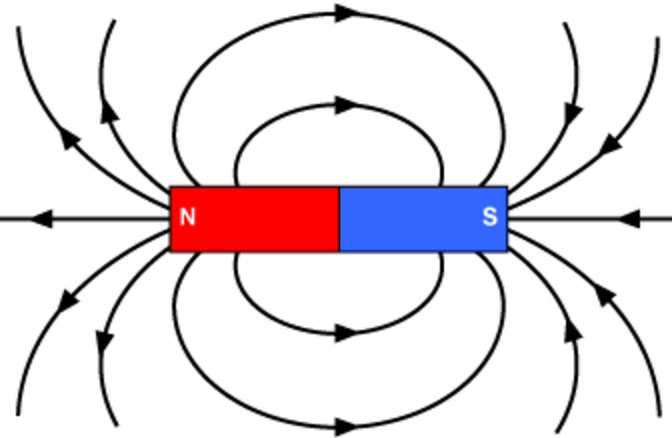

As an approximation, it is represented by a field of a magnetic dipole currently tilted at an angle of about 11° with respect to Earth's rotational axis, as if there were an enormous bar magnet placed at that angle through the center of Earth. The magnitude of Earth's magnetic field at its surface ranges from 25 to 65 μT (0.25 to 0.65 G). The magnetic field is generated by electric currents due to the motion of convection currents of a mixture of molten iron and nickel in Earth's outer core: these convection currents are caused by heat escaping from the core, a natural process called a geodynamo. Įarth's magnetic field, also known as the geomagnetic field, is the magnetic field that extends from Earth's interior out into space, where it interacts with the solar wind, a stream of charged particles emanating from the Sun. The dense clusters of lines are within Earth's core.

The rotation axis of Earth is centered and vertical. The lines represent magnetic field lines, blue when the field points towards the center and yellow when away. The issue with using ferro/magnetic materials to view a field is, the materials themselves become magnetized and change the original field to include their own influence.Computer simulation of Earth's field in a period of normal polarity between reversals. Holding a strong magnet in front of a CRT-type monitor with a white screen can also give a representation of the fields, without any "lines of force" visible. Ferrofluids will react in all 3 dimensions and can more accurately reproduce a field, except for gravity creating a weight restriction. And in all 3 dimensions, which iron filing demonstrations cannot reproduce. If you could see the actual fields of force, it would be shaded and gradient, with a heavier, thicker shade near the stronger part of the magnet, fading the further you get from the source. The actual magnetic field itself does not have "lines" in it the "lines" are solely the iron filings becoming polarized themselves, reacting to each other and the field, lining up N and S with respect to each other in the field. These concepts can be quickly 'translated' to their mathematical form. Many laws of magnetism (and electromagnetism) can be stated completely and concisely using simple concepts such as the 'number' of field lines through a surface. There is an advantage to using magnetic field lines as a representation. Magnetic field lines are like the contour lines (constant altitude) on a topographic map in that they represent something continuous, and a different mapping scale would show more or fewer lines. Magnetic fields' "lines" are also visually displayed in polar auroras, when particles cause visible streaks of light that line up with the local direction of Earth's magnetic field. This caused by the large permeability of iron relative to air. The use of iron filings to display a field alters the magnetic field so that it is much larger along the "lines" of iron. This gives you an idea of the strength of the magnet. You then look at the shape of the iron filings and see the gap between the flux lines. The iron filings will get attracted to the magnet and move into the shape of the flux lines. A way of determining the strength of a magnet is to do an experiment with iron filings. If the lines between a magnet are far apart and there aren't many lines, the magnet is weak. If there are a lot of lines through a magnet and not a great space between them, the magnet is strong. For example, iron filings placed in a magnetic field line up to form lines that correspond to 'field lines'. One can make magnetic field lines show as if they were physical phenomena. His theory predicts that electricity, light, and gravity have finite propagation delays. His theory is that all of reality is made up of force itself. The idea of lines of force was invented by Michael Faraday. As seen here, the magnetic field points towards a magnet's south pole and away from its north poleĪ magnetic field line or magnetic flux line shows the direction of a magnet's force and the strength of a magnet.

Compasses reveal the direction of the local magnetic field.


 0 kommentar(er)
0 kommentar(er)
